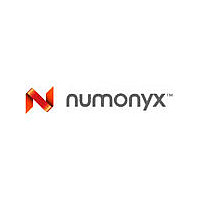N25Q128A11B1240E NUMONYX, N25Q128A11B1240E Datasheet - Page 161

N25Q128A11B1240E
Manufacturer Part Number
N25Q128A11B1240E
Description
Manufacturer
NUMONYX
Datasheet
1.N25Q128A11B1240E.pdf
(185 pages)
Specifications of N25Q128A11B1240E
Cell Type
NOR
Density
128Mb
Access Time (max)
7ns
Interface Type
Serial (SPI)
Boot Type
Bottom
Address Bus
1b
Operating Supply Voltage (typ)
1.8V
Operating Temp Range
-40C to 85C
Package Type
TBGA
Program/erase Volt (typ)
1.7 to 2/8.5 to 9.5V
Sync/async
Synchronous
Operating Temperature Classification
Industrial
Operating Supply Voltage (min)
1.7V
Operating Supply Voltage (max)
2V
Word Size
8b
Number Of Words
16M
Supply Current
20mA
Mounting
Surface Mount
Pin Count
24
Lead Free Status / Rohs Status
Supplier Unconfirmed
- Current page: 161 of 185
- Download datasheet (6Mb)
10
Note:
XIP Operations
XIP (eXecution in Place) mode is available in each protocol: Extended SPI, DIO-SPI, and
QIO-SPI. XIP mode allows the memory to be read simply by sending an address to the
device and then receiving the data on one, two, or four pins in parallel, depending on the
customer requirements. It offers maximum flexibility to the application, saves instruction
overhead, and allows a dramatic reduction to the Random Access time.
You can enable XIP mode in two ways:
Setting to 0 the bit 3 of the Volatile Configuration Register the device is ready to enter in XIP
mode right after the next fast read instruction (by 1, 2 or 4 pin).
While acting on the Non Volatile Configuration Register (bit 11 to bit 9, depending on which
XIP type is required, single, dual or quad I/O) the memory enters in the selected XIP mode
only after the next power-on sequence. The Non Volatile Configuration Register XIP
configuration bits allows the memory to start directly in the required XIP mode (Single, Dual
or Quad) after the power on.
The XIP mode status must be confirmed forcing the XIP confirmation bit to "0", the XIP
confirmation bit is the value on the DQ0 pin during the first dummy clock cycle after the
address in XIP reading instruction. Forcing the bit "1" on DQ0 during the first dummy clock
cycle after the address (XIP Confirmation bit) the memory returns in the previous standard
read mode, that means it will codify as an instruction code the next byte received on the
input pin(s) after the next chip select. Instead, if the XIP mode is confirmed (by forcing the
XIP confirmation bit to 0), after the device next de-selection and selection cycle, the memory
codify the first 3 bytes received on the inputs pin(s) as a new address.
Besides not confirming the XIP mode during the first dummy clock cycle, it is possible to exit
the XIP mode by mean of a dedicated rescue sequence.
For devices with a feature set digit equal to 2 or 4 in the part number (Basic XiP), it is not
necessary to set the Volatile Configuration Register bit 3 to enter XIP mode: it is possible to
enter XIP mode directly by setting XIP Confirmation bit to 1 during the first dummy clock
cycle after a fast read instruction.See
Using the Volatile Configuration Register: this is dedicated to applications that boot in
SPI mode (Extended SPI, DIO-SPI or QIO-SPI) and then during the application life
need to switch to XIP mode to directly execute some code in the flash.
Using the Non Volatile Configuration Register: this is dedicated to applications that
need to boot directly in XIP mode.
Section 16: Ordering
information.
161/185
Related parts for N25Q128A11B1240E
Image
Part Number
Description
Manufacturer
Datasheet
Request
R

Part Number:
Description:
128-mbit 3 V, Multiple I/o, 4-kbyte Subsector Erase On Boot Sectors, Xip Enabled, Serial Flash Memory With 108 Mhz Spi Bus Interface
Manufacturer:
Numonyx
Datasheet:

Part Number:
Description:
Numonyx™ Embedded Flash Memory J3 V. D
Manufacturer:
Numonyx
Datasheet:

Part Number:
Description:
Manufacturer:
NUMONYX
Datasheet:

Part Number:
Description:
Manufacturer:
NUMONYX
Datasheet:










